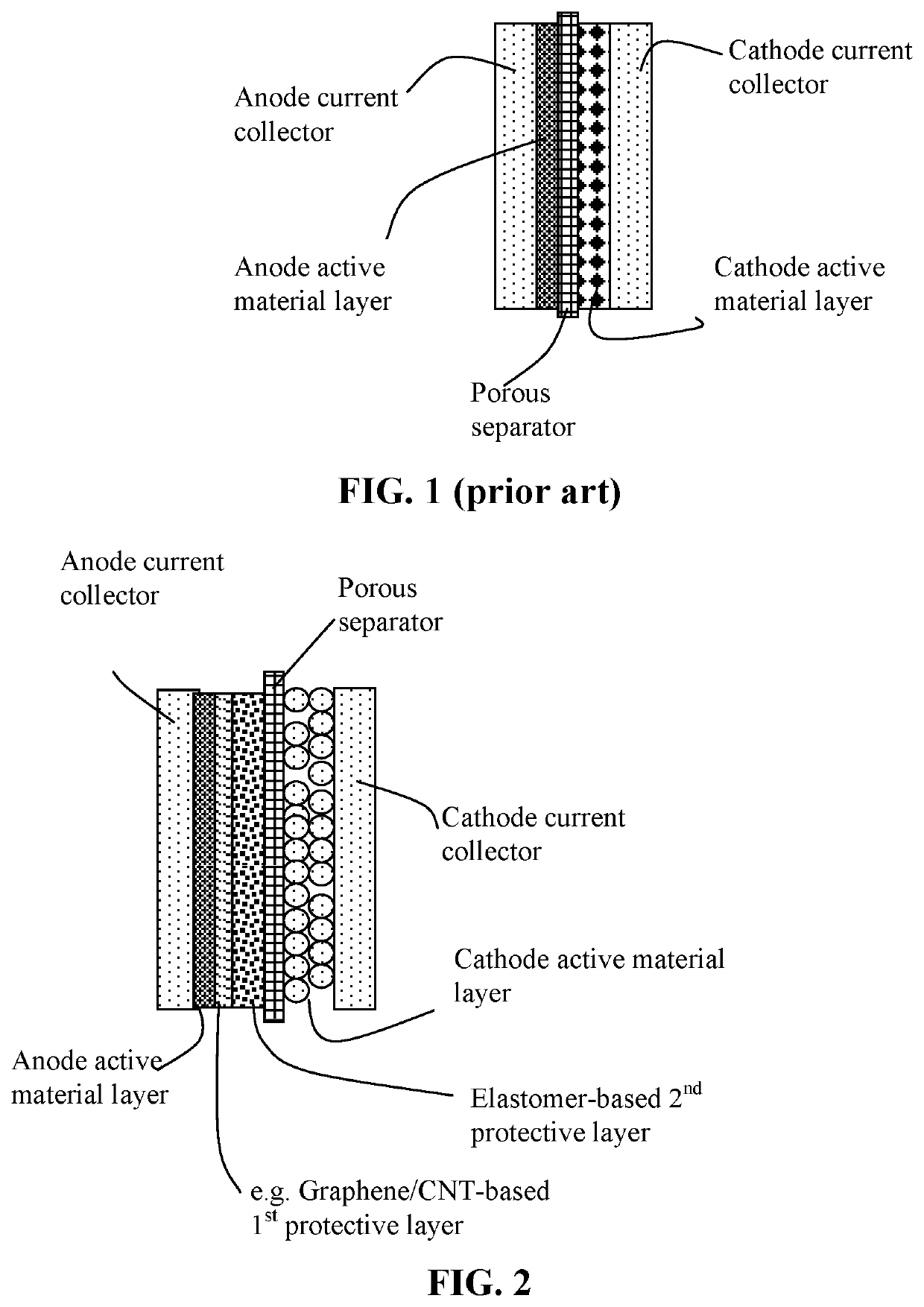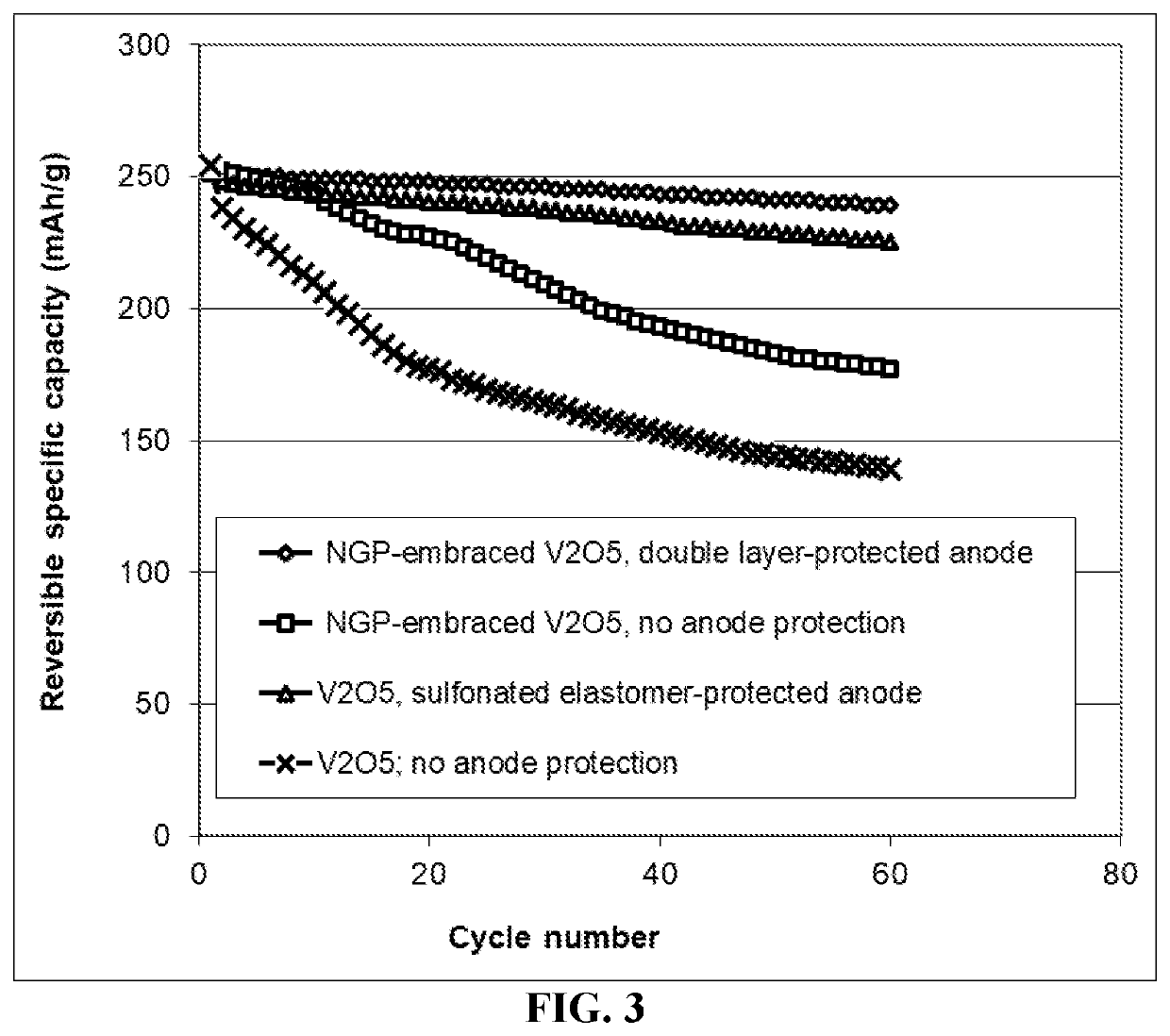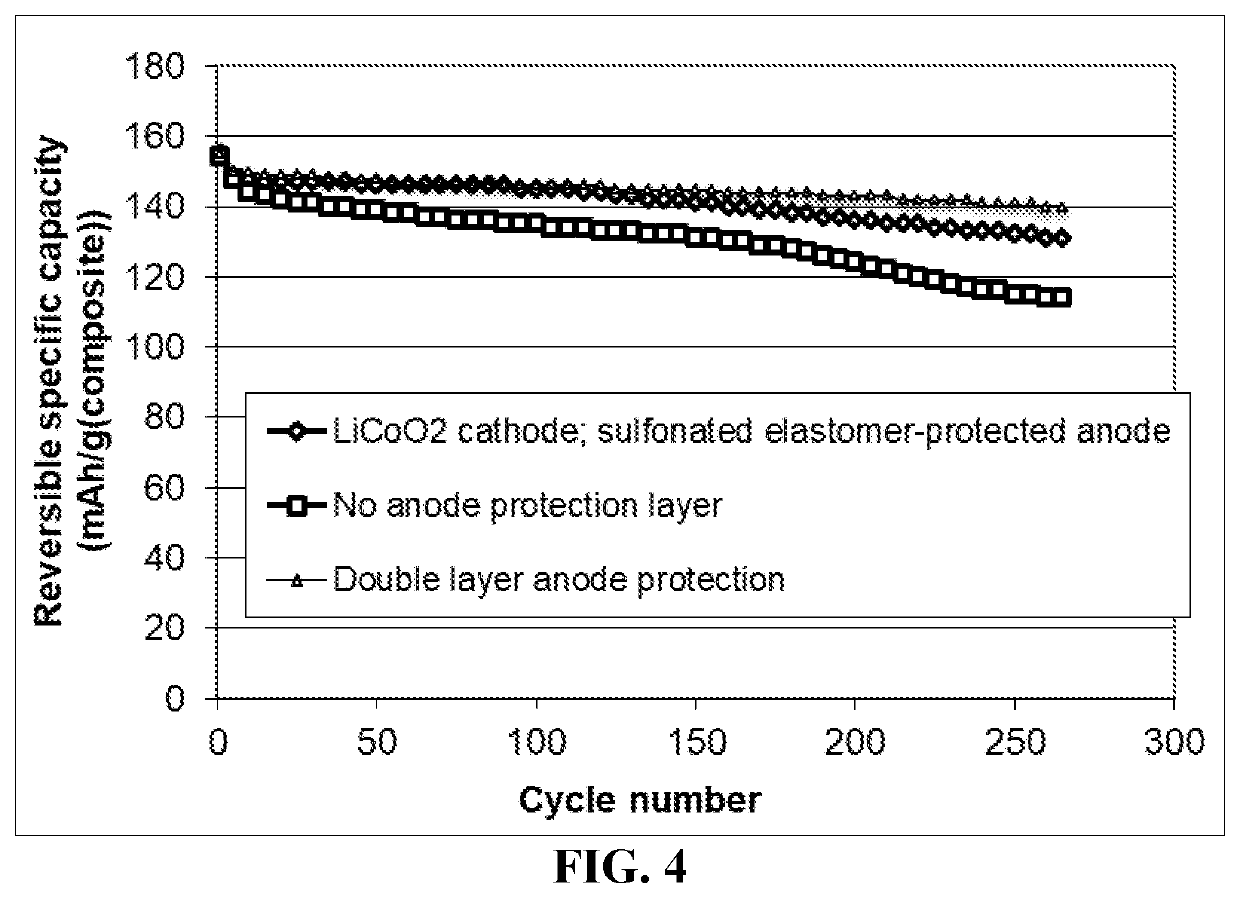Lithium metal secondary battery containing two anode-protecting layers
- Summary
- Abstract
- Description
- Claims
- Application Information
AI Technical Summary
Benefits of technology
Problems solved by technology
Method used
Image
Examples
example 1
on of Triblock Copolymer Poly(Styrene-Isobutylene-Styrene) or SIBS
[0122]Both non-sulfonated and sulfonated elastomers are used to build the second anode-protecting layer in the present invention. The sulfonated versions typically provide a much higher lithium ion conductivity and, hence, enable higher-rate capability or higher power density. The elastomer matrix can contain a lithium ion-conducting additive, an electron-conducting additive, and / or a lithium metal-stabilizing additive.
[0123]An example of the sulfonation procedure used in this study for making a sulfonated elastomer is summarized as follows: a 10% (w / v) solution of SIBS (50 g) and a desired amount of graphene oxide sheets (0 to 40.5% by wt.) in methylene chloride (500 ml) was prepared. The solution was stirred and refluxed at approximately 40° C., while a specified amount of acetyl sulfate in methylene chloride was slowly added to begin the sulfonation reaction. Acetyl sulfate in methylene chloride was prepared prior ...
example 2
of Sulfonated Polybutadiene (PB) by Free Radical Addition of Thiolacetic Acid (TAA) Followed by in Situ Oxidation with Performic Acid
[0126]A representative procedure is given as follows. PB (8.0 g) was dissolved in toluene (800 mL) under vigorous stirring for 72 h at room temperature in a 1 L round-bottom flask. Benzophenone (BZP) (0.225 g; 1.23 mmol; BZP / olefin molar ratio=1:120) and TAA (11.9 mL; 0.163 mol, TAA / olefin molar ratio=1.1) and a desired amount of graphene sheets or CNTs (0%-40% by wt.) were introduced into the reactor, and the polymer solution was irradiated for 1 h at room temperature with UV light of 365 nm and power of 100 W.
[0127]The resulting thioacetylated polybutadiene (PB-TA) / graphene composite was isolated by pouring 200 mL of the toluene solution in a plenty of methanol and the polymer recovered by filtration, washed with fresh methanol, and dried in vacuum at room temperature (Yield=3.54 g). Formic acid (117 mL; 3.06 mol; HCOOH / olefin molar ratio=25), along ...
example 3
of Sulfonated SBS
[0129]Sulfonated styrene-butadiene-styrene triblock copolymer (SBS) based elastomer was directly synthesized. First, SBS (optionally along with a lithium ion-conducting additive or electron-conducting additive) is first epoxidized by performic acid formed in situ, followed by ring-opening reaction with an aqueous solution of NaHSO3. In a typical procedure, epoxidation of SBS was carried out via reaction of SBS in cyclohexane solution (SBS concentration=11 g / 100 mL) with performic acid formed in situ from HCOOH and 30% aqueous H2O2 solution at 70° C. for 4 h, using 1 wt. % poly(ethylene glycol) / SBS as a phase transfer catalyst. The molar ratio of H2O2 / HCOOH was 1. The product (ESBS) was precipitated and washed several times with ethanol, followed by drying in a vacuum dryer at 60° C.
[0130]Subsequently, ESBS was first dissolved in toluene to form a solution with a concentration of 10 g / 100 mL, into which was added 5 wt. % TEAB / ESBS as a phase transfer catalyst and 5 w...
PUM
 Login to View More
Login to View More Abstract
Description
Claims
Application Information
 Login to View More
Login to View More - R&D
- Intellectual Property
- Life Sciences
- Materials
- Tech Scout
- Unparalleled Data Quality
- Higher Quality Content
- 60% Fewer Hallucinations
Browse by: Latest US Patents, China's latest patents, Technical Efficacy Thesaurus, Application Domain, Technology Topic, Popular Technical Reports.
© 2025 PatSnap. All rights reserved.Legal|Privacy policy|Modern Slavery Act Transparency Statement|Sitemap|About US| Contact US: help@patsnap.com



